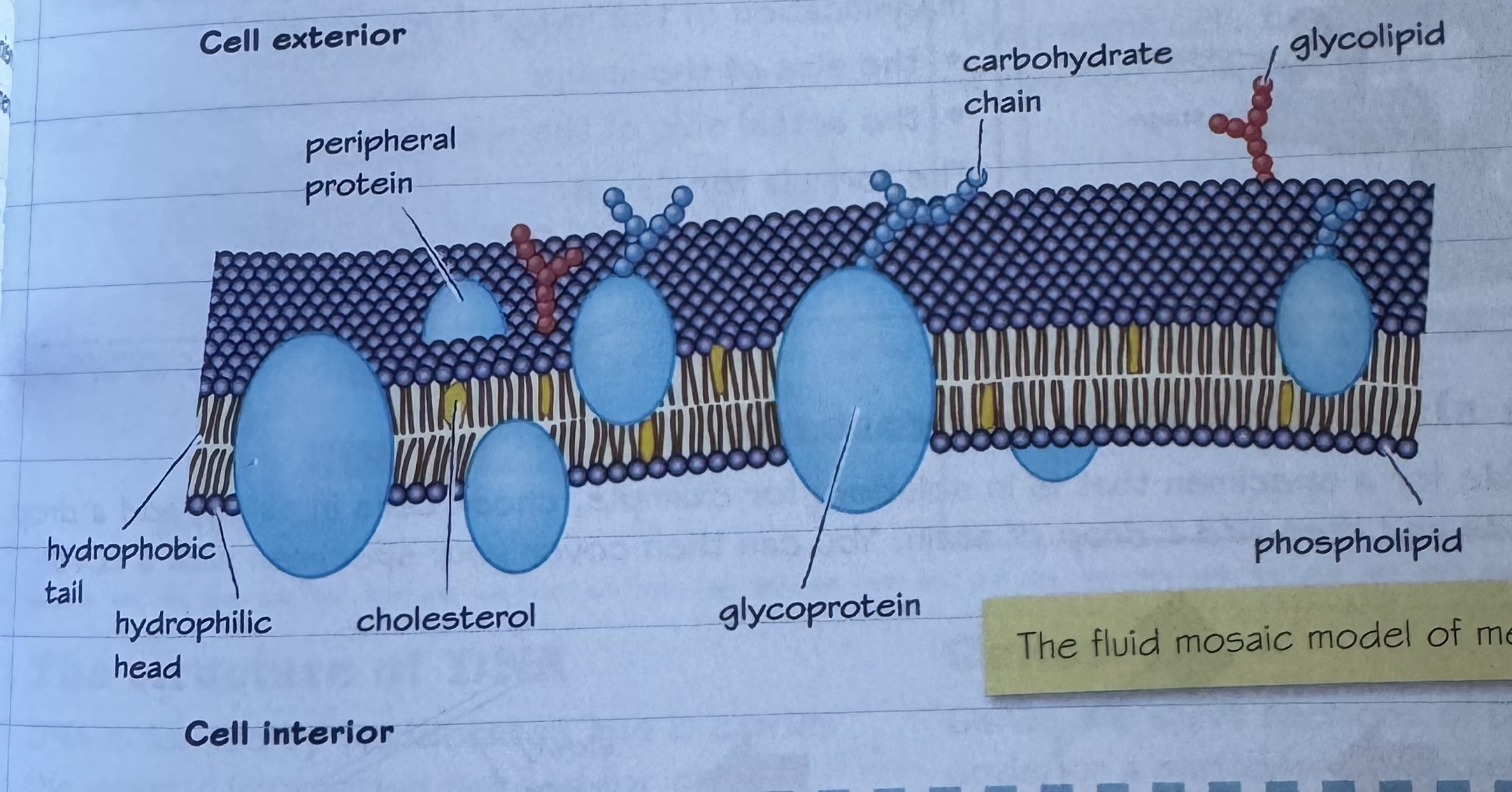The Plasma Membrane
1/9
There's no tags or description
Looks like no tags are added yet.
Name | Mastery | Learn | Test | Matching | Spaced |
|---|
No study sessions yet.
10 Terms
plasma membrane model name
fluid mosaic model
components / structure
phospholipids, integral and peripheral proteins (in bilayer), glycoproteins, glycolipids, cholesterol

structure and function of phospholipids
hydrophilic head, hydrophobic tail. Forms a bilayer.
control what enters and exits the cell
structure and function of integral proteins
cross the membrane
transport molecules in and out of cell
structure and example of peripheral proteins
found on one side of the membrane only
e.g. enzymes
structure and function of glycolipids
phospholipids attached to long carbohydrate chains
cell recognition, cell signalling and receptors
structure and function of glycoproteins
proteins attached to long carbohydrate chain
cell signalling, cell recognition and recepto
function of plasma membrane
semi-permeable, so controls transport of molecules in and out of cells
separates contents of cell from outside environment
allows other cells to recognise the cell as belonging to the body
allow cells to signal each other
allows molecules (e.g. hormones) to bind to receptors in the membrane
holds components of some chemical reactions in place (e.g. enzymes)
function of cholesterol
maintains stability of the cell
explain the role of the plasma membrane around the mitochondria
separate the contents of the mitochondria from the cytoplasm. Controls the movement of molecules in and out of the mitochondria